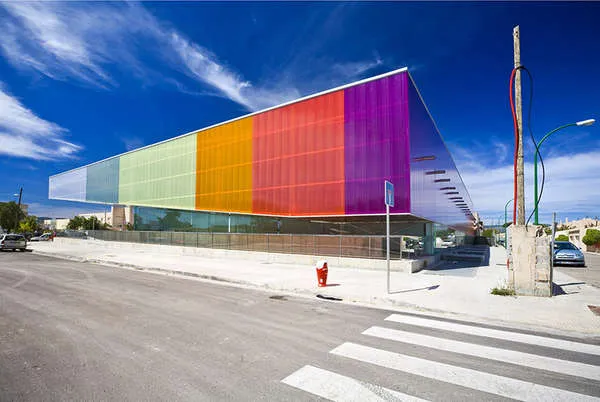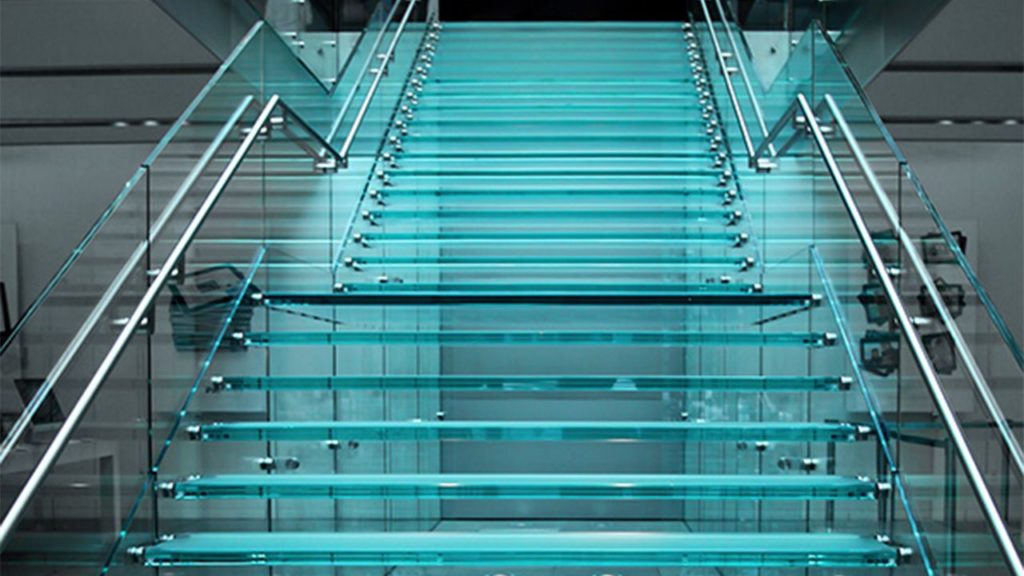The types and uses of glass have greatly evolved since it was first used in construction thousands of years ago. Advances in technology have led to the development of a wide range of specialty glass products that can be used to achieve specific design goals.
Graana.com, Pakistan’s smartest property portal, has compiled and discussed different types of glass that are available in the market today.
Shatterproof Glass
Shatterproof glass is a laminated safety and security glass, often used in the construction of houses and buildings. The name is usually quite misleading because people generally presume unbreakable glass to actually be shatterproof glass.
If this form of security glass breaks, the shards from the glass doors and windows will still be held in place, preventing it from shattering inwards.
Shatterproof glass is often used for windows, floors and skylights. Polyvinyl butyral, a form of plastic, is also used in the manufacturing process. As a result, if it breaks, it cannot create sharp-edged pieces.
Laminated Glass

Laminated glass is made up of many layers of regular glass and, as a result, it is much heavier. It is thicker, and more UV and sound resistant. These are usually utilised in aquariums, bridges, and other structures, as they are UV and sound resistant. It is also effective for building glass canopies since it can block out hazardous sunlight.
This type of glass is typically made up of two tempered glass sheets with lamination in the middle. This type of glass typically comes in 6mm toughened/2.28mm laminated/6mm toughened.
Chromatic Glass

Chromatic glass is a unique type of glass that is usually used in ICUs and meeting rooms. It has a propensity to shield the interior from direct sunlight.
This type of glass used in construction is more expensive than others. Electric lamination (electro-chromatic) is sometimes used on chromatic glass. Thermochromatic (heat-sensitive lamination) and photochromic glass (light-sensitive lamination) are two types of chromatic glass.
Tinted Glass

Tinted glass is basically coloured glass, which is very popular all across the world. A special type of iron is used in the preparation of the glass to create different shades of colours. The key benefit of using this glass is its attractiveness and colourfulness, which do not compromise any other properties of the glass.
Tinted glass is used in various forms, such as roofs and windows. During the manufacturing stage, iron oxide is added to obtain a green shade and sulphur to achieve a blue shade.
The following table shows the different types of iron and their corresponding colour.
| Iron | Colour |
| Sulphur | Blue |
| Cobalt | Blue |
| Manganese Dioxide | Black |
| Iron Oxide | Green |
| Chromium | Dark Green |
| Uranium | Yellow |
| Titanium | Yellowish-Brown |
Float Glass

Float glass, also known as soda-lime glass, is another type of glass used in construction. Made with calcium silicate and sodium silicate, this glass is flat and clear, thus producing a glaring effect.
Its thickness ranges from 2mm to 20mm, with weights ranging from 6 to 36 kg/m2. The glass is mostly used in shop fronts, public spaces, and other areas.
Float glass is manufactured by melting silica sand, potash, line, soda, recycled glass in molten tin and then floating it on a tin bed. The primary ingredients are melted in a furnace, resulting in a flat and homogeneous sheet.
The molten mass used to make float glass is allowed to harden on the moulting tin as it flows. The mass is then annealed to reduce the tensions that form as the molten mass cools and hardens. Annealing is also important for getting a higher refractive index and density by making the glass more stable.
Extra Clear Glass
Extra clear glass stands out because of its transparency. This is a one-of-a-kind float glass with a very low iron concentration, hence earning the name “low iron glass” or “extra glass”.
Extra clear glass allows up to 92 percent of sunlight to pass through. Before being melted in a furnace, silica sand with low or no iron concentration is carefully blended with other minerals to produce super transparent glass. The molten glass is then cooled in the same way that float glass is, resulting in highly transparent glass.
Wired Glass

Wired glass is a great example of modern technology. A wired mesh is placed in the middle of the structural glass during the preparation of wired glass.
The wire mesh is primarily used to hold the entire glass together and prevent it from shattering or cracking. Because of its fire resistance, wired glass is often used in windows and walls of schools, public buildings, hotels, government offices, and institutions. Wired glass allows for additional time to respond in an emergency, especially since it does not shatter even in extreme temperatures.
This type of glass comes in two varieties: clear and veiled. In most industrial and garage spaces, wired glass is primarily used.
Glass Block
Glass block is a commonly-used glass type, which is manufactured as two different types: hollow and solid. This type of glass are usually made of two pieces that are pushed together when the glass is molten (with some of the vacuum still present in-between).
In most cases, sunlight is allowed to stream through hollow glass wall blocks in a structure. Since highly competent craftsmen are required to install the glass blocks, the cost is also quite significant.
Tempered Glass

Tempered glass, also known as hardened glass, is one of the most typical type of glass used in construction of most buildings because of its strength and durability. To ensure that the finished product is sturdy, producers often apply chemical or thermal treatments to ordinary glass, which add strength-enhancing characteristics.
Tempered glass frequently breaks into minute granular fragments, rather than shards with sharp edges, as a result of chemical and heat treatments, lowering the risk of damage. It is unique in terms of thermal and physical robustness.
Furthermore, tempered glass is ideal for explosion-proof and high-pressure applications due to its outstanding thermal resistance, safety, and strength. This explains the diverse range of hotel, office, residential, and commercial glass dividers. Tempered glass works well for windows, doors, facades, and interior ornamental panels. It is also a popular choice for glass tabletops, frameless shower doors, cabinets, glass shelves, and any glass near fireplaces due to its unique qualities.
Sheet Glass
Sheet glass is commonly used in construction. The glass is made in a unique way as it is first passed through rollers to generate a flat and crisp surface finish.
Cutting flat glass does not require any additional equipment; all that you need is a glass cutter. This type of glass is available in a variety of pricing ranges, sizes, and thickness in the market.
Moreover, sheet glass is used in greenhouse glazing because it is less expensive and has less distortion than other forms of glass. It is also used in windows, doors, and other similar applications.
Conclusion
In modern architecture and design, glass has emerged as an even more prominent and efficient building material. It is widely used, especially in high-rise buildings.
Glass not only adds an aesthetic element to structures, but its property to transmit, absorb or refract sunlight also cools your home during heat waves.
If you’re looking for more information on different construction materials in Pakistan, visit Graana.com.




